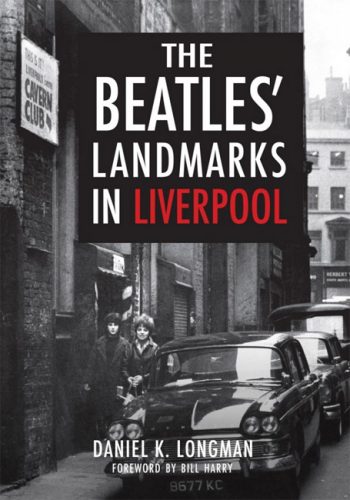By Daniel K. Longman
Amberley Press
£14.99
Reviewed by Joe Coventry
What do a nondescript New Brighton residential estate, a Litherland NHS Walk-in Centre, a Church in leafy Woolton and a never built Underground ventilation shaft in the heart of the city have in common? The answer is teased out in Longman’s 95 page take, not so much on the Fab Four, but on some of the iconic places the band played in the heyday years of what Bill Harry introduced to the world as the Mersey Beat sound.
So, what about the above locations?
The estate used to accommodate a 567 foot Tower astride a massive Ballroom. The Tower was dismantled in 1919 but the edifice survived until it burnt to the ground in 1969. By then the Beatles had filled the auditorium on November 4th 1961 with 4,500 hysterical fans, the biggest audience ever to see them on home soil.
And the current NHS Walk-in? Well, in 1960 that was Litherland Town Hall and when the boys were unceremoniously kicked out of Germany after a Hamburg gig, it was here on 27th December 1960 that ‘Beatlemania’ as we know it, was born. The other two places alluded to above were St Peter’s Church in Woolton, where Paul first met John, and a dingy basement club known better as The Cavern.
Longman has an engaging, uncomplicated style when disclosing gems such as these. Where possible he juxtaposes grainy black and white images of the past with technicolour shots of the present to enable his readers to orientate to the evolving locations and the vicissitudes of town planners or luck. The book feels good and it packs in more than it looks, perhaps due to the small font size.
It tells a history of sorts but dipping in at will does not detract from the information imparted. If read on a chronological basis it tells of childhood homes and family influences before venturing out into the big world; from skiffle group beginnings to chance meetings and venues, influential comings and goings of major artists, (just when did Ringo become the drummer?) to managers and significant others: the names and places trip off the tongue, some recaptured in the lyrics of songs like the ‘infamous’ Penny Lane or the secluded Strawberry Fields.
These vie for attention with stores like Hessy’s were John’s Aunt Mimi bought him his first guitar for £18, (not cheap!) or NEMS, were Brian Epstein waited in the wings. Eleanor Rigby, Tommy Steele’s 3d Half A Sixpence brainchild, sits ‘for all the lonely people’ on Stanley Street.
The journey reaches it’s apogee, climaxing in an August 3rd 1963 final set, the 292nd ecstatic hot and sweaty cellar session in Mathew Street. It’s walls came tumbling down and the band moved on to bigger pastures.
After cracking America in 1964 the group returned to Liverpool on July 10th for a showing of A Hard Day’s Night. They were not sure of the reception they would receive. As they waved to the thousands battling with a police cordon in Chapel Street from the Town Hall balcony, and later weaving their way to the Odeon Cinema on London Road through a 200,000 strong melee, they need not have worried. Paul recalled it as ‘the most ridiculous reception we ever had’. Scouse humour, or what?
The die then was cast, throughout the decade and beyond Liverpool was the Musical Capital of the world thanks to these four local lads. With so much written about the group it is easy and blasé to assume there are no more interesting takes to explore. This author admits his is not a comprehensive survey, but there is more than enough here to provoke memories or inspire the next generation of fans wanting to catch a glimpse of where the greatest phenomenon of the 20th Century musical world came from. I for one enjoyed it.
